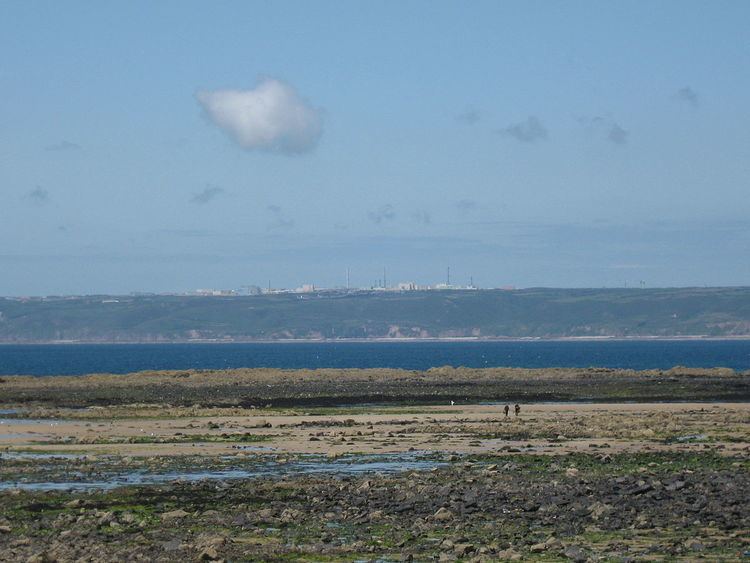Status Operational Phone +33 2 33 78 77 77 Construction began 1979 | Operator(s) EDF Make and model Alstom | |
 | ||
Commission date December 4, 1985 (December 4, 1985)2019 (Flamanville 3 scheduled) Address Centrale EDF, 50340 Flamanville, France Hours Open today · 1:30–5:30PMMonday1:30–5:30PMTuesday1:30–5:30PMWednesday1:30–5:30PMThursday1:30–5:30PMFriday1:30–5:30PMSaturdayClosedSundayClosed Similar Camping Les Tourterell, Cap Cotentin | Office de, Camping Le Grand Large, Mairie ‑ camping caravaning, AREVA La Hague | ||
The Flamanville Nuclear Power Plant is located at Flamanville, Manche, France on the Cotentin Peninsula. The power plant houses two pressurized water reactors (PWRs) that produce 1.3 GWe each and came into service in 1986 and 1987, respectively. It produced 18.9 TWh in 2005, which amounted to 4% of the electricity production in France. In 2006 this figure was about 3.3%.
Contents
In 2006, before the start of construction of the EPR (unit 3), there were 671 workers regularly working at the two operational reactors.
The EPR (Flamanville 3) aimed to be safer than any previous reactor, but as of July 2016, the project was three times over budget and years behind schedule. Various safety problems have been raised, including weakness in the steel used in the reactor.
Unit 3Edit
Construction on a new reactor, Flamanville 3, began on 4 December 2007. The new unit is an Areva European Pressurized Reactor type and is planned to have a nameplate capacity of 1,650 MWe.
EDF has previously said France's first EPR would cost €3.3 billion and start commercial operations in 2012, after construction lasting 54 months.
On 3 December 2012 EDF announced that the estimated costs have escalated to €8.5 billion ($11 billion), and the completion of construction is delayed to 2016. The next day the Italian power company Enel announced it was relinquishing its 12.5% stake in the project, and 5 future EPRs, so would be reimbursed its project stake of €613 million plus interest.
In November 2014 EDF announced that completion of construction was delayed to 2017 due to delays in component delivery by Areva.
In April 2015 Areva informed the French nuclear regulator, Autorité de sûreté nucléaire (ASN), that anomalies had been detected in the reactor vessel steel, causing "lower than expected mechanical toughness values". Further tests are underway. Segolene Royal, Minister of Ecology, Sustainable Development and Energy in the Second Valls Government, has asked the producer for further details and possible consequences.
Various safety problems have been raised, including weakness in the steel used in the reactor together with heterogeneity of the steel alloy forged high integrity components used in the reactor pressure vessel, that have also been shown to be present in Japanese-sourced components that have entered the French nuclear equipment supply chain. The safety of the Flamanville EPR plant has also been questioned due to the danger of flooding of the kind experienced during the 1999 Blayais Nuclear Power Plant flood. In June 2015 multiple faults in cooling system safety valves were discovered by ASN.
The EPR (Flamanville 3) aimed to be safer than any previous reactor, but as of 2016 the project is three times over budget and years behind schedule. In September 2015 EDF announced that the estimated costs had escalated to €10.5 billion, and the start-up of the reactor was delayed to the fourth quarter of 2018.
The delays of Unit 3 of Flamanville received additional attention when in December 2016 The Economist reported that the British loan guarantees for Hinkley Point C require Unit 3 to be operational by 2020, that the regulator will rule on the future of Unit 3 mid-2017 and that one possible outcome of this ruling can delay its opening far beyond 2018, thus jeopardizing the British loan guarantees thereby preventing EDF from building the EPRs at Hinkley Point. In February 2017 renewed delays in the construction of the EPR-reactors at Taishan Nuclear Power Plant prompted EDF to state that Flamanville 3 remains on schedule to start operations by the end of 2018, assuming it receives regulator approval.
IncidentsEdit
On 9 February 2017 a mechanical problem with a fan in the turbine hall caused an explosion and fire, causing five people to be treated for smoke inhalation. While the non-nuclear accident did not cause any radioactive leak, it did cause the number one reactor to be disconnected from the power grid. EDF initially estimated the reactor would be operational within a week, but later estimated the end of March.
